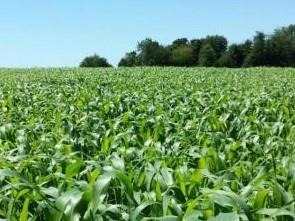By Mark Sulc and Bill Weiss
Some producers may be considering planting a supplemental forage crop after winter wheat grain harvest for various reasons. Some areas of the state are becoming very dry. In many areas, the wet weather this spring resulted in ample forage supply, but good to high-quality forage is in short supply because of the wet weather that delayed harvesting until the crop was mature, or it resulted in rained-on hay that lowered quality.

The table below summarizes options for planting annual forages after wheat harvest.
Species | Comments |
Corn plant silage | Highest single-cut forage yield potential of all choices.
Silage quality will be lower than normal planting dates.
The risk is getting it harvested at the right moisture for good fermentation. |
Forage sorghum
Sorghum-sudangrass Sudangrass | Best harvested as silage. Brown midrib (BMR) varieties have higher digestibility and are best for growing animals and lactating cows; however, conventional varieties are okay if BMR seed is not available. Can produce 3-4 tons of dry matter/acre. Potential high nitrates under drought conditions. Risk of prussic acid (hydrogen cyanide gas) if frosted. |
Soybean silage | A reasonable alternative to replace alfalfa forage. Check seed treatment and herbicide labels, many restrict forage use. |
Teff grass | Best suited to beef and sheep; lower yield than sorghum grasses. Can be harvested as hay or silage. |
Millets | Best suited to beef and sheep; many produce a single harvest. Best harvested as silage. Potential high nitrates under drought conditions. Pearl millet has no prussic acid after frost damage. |
Mixtures of annual grasses with soybean | Best harvested as silage. Mixtures of sorghum grasses or millets or even oats and spring triticale with soybean are feasible and soybean can improve forage quality characteristics. |
The forage grass options all require adequate nitrogen to maximize yield potential, either as fertilizer or manure (about 60 lbs of actual available nitrogen per acre). Check any potential herbicide restrictions from the previously planted crop and consider herbicides used after wheat and before planting these annual forages.
Chopping and ensiling or wet wrapping are the best mechanical harvest alternatives for most of the options listed. Wilting is usually necessary. Storage and harvest costs are greater, and fermentation quality can be poor with crops less than about 30% DM (greater than 70% moisture). Ideally, silage should be left undisturbed for at least two weeks to allow the forage to reach stable fermentation. If forage is needed sooner, consider daily green chopping of forage or wet wrapping individual bales for feeding until the silage is ready. Except for Teff, dry baling any of the listed forages is a challenge. Work with your nutritionist to incorporate these alternative forages into properly balanced rations.
In addition to these options, Italian ryegrass or oats can be planted in early August, if soil moisture is adequate. They will produce forage into the autumn months, and Italian ryegrass will likely survive the winter and produce forage next spring and early summer depending on the variety planted. They are suitable for ensiling or wet wrapping or grazing in the autumn. Brassicas can be planted in early August as well, but they are only suitable for grazing in the autumn, not for mechanical harvesting.
Source : osu.edu